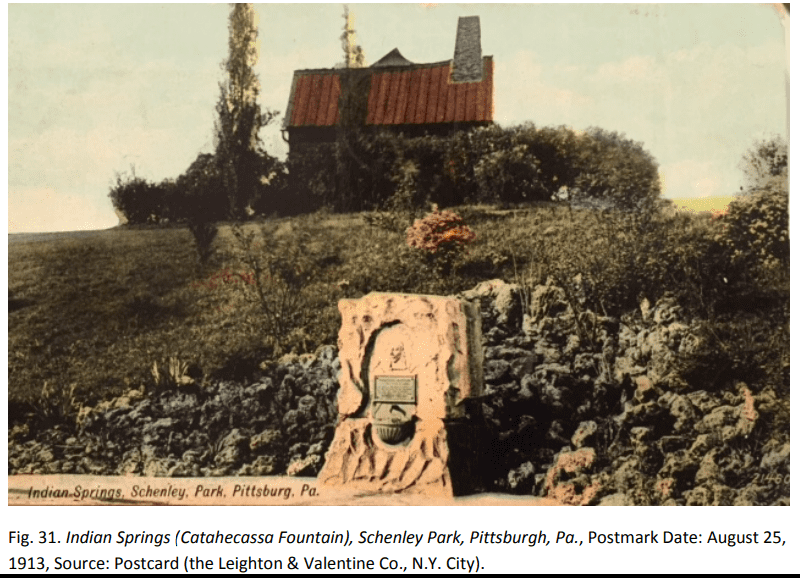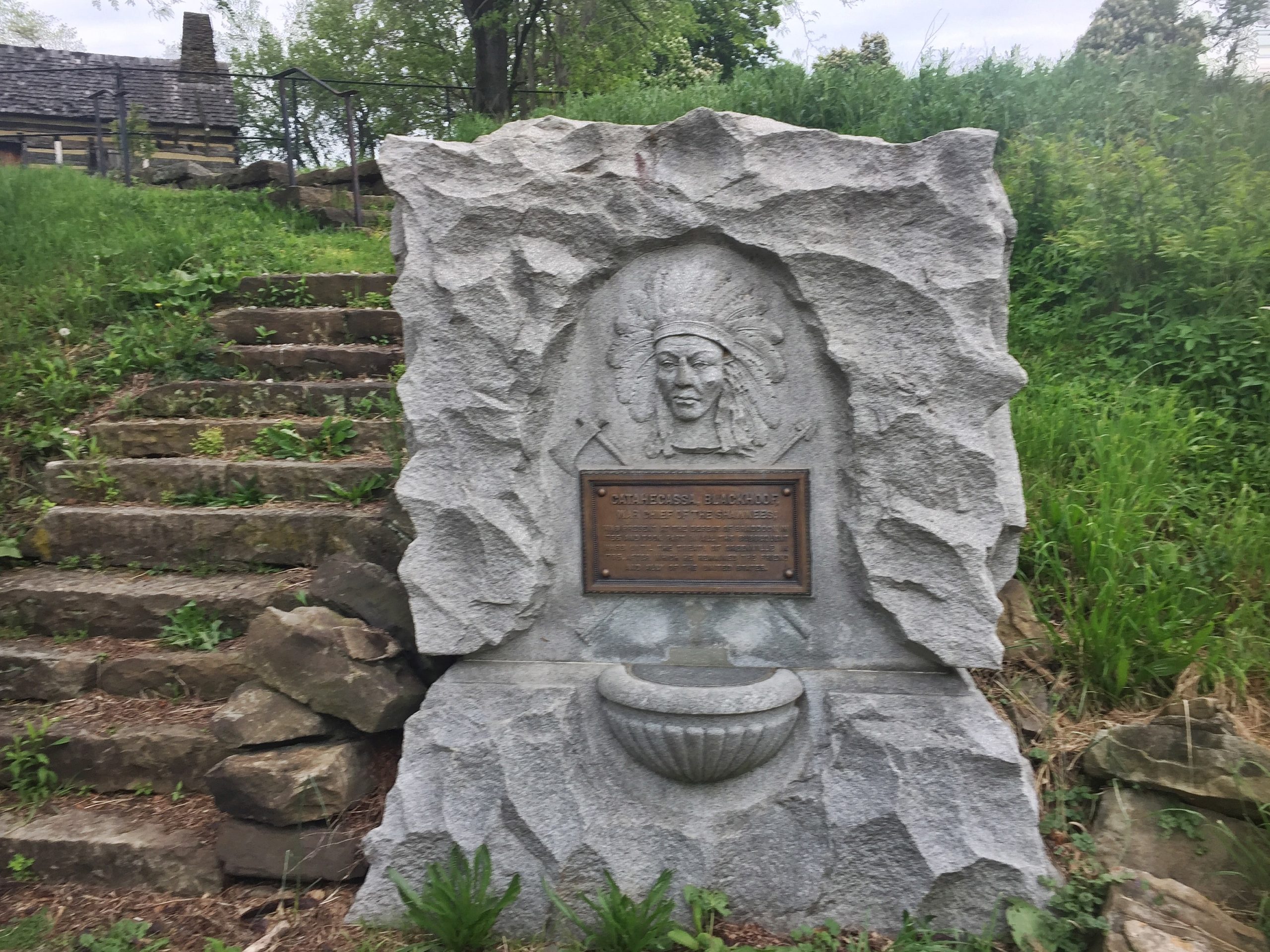If you participated in Race for the Cure last weekend, you likely walked or ran past an old log house located on the side of the road. The Neill log house stands out and is hard to miss, mostly because it’s a little house on the prairie style house surrounded by a chain link fence in the middle of a golf course. The Neill house is considered to be the oldest house in the city of Pittsburgh.
Photo of Catahecassa Springs Monument from May 14, 2017.
I took a photo of the Neill house a few years ago during the Race for the Cure. In front of the Neill house is a stone monument, that I have certainly passed many times but never something that I had noticed before. This stone monument marks what used to be a public water source.
There are only a handful of Google search results on “Catahecassa Blackhoof,” all of which note there is a historical marker at this location, but give little other information.
Catahecassa Springs, now a historic landmark in Pittsburgh
In February 2017, City Council voted to approve the following springs as historic landmarks in the city of Pittsburgh:
- Howe Spring (Shady Side)
- Voegtly Spring (Spring Hill)
- Catahecassa Spring (Schenley Park)
The entire nomination form for the Catahecassa Spring is available on the Preservation Pittsburgh website here. By the way, if you are looking for some in-depth reading on local historic landmarks, the “Documents & Archives” section on the Preservation Pittsburgh website contains links to all of the nominations that they have submitted.
The History of Catahecassa Springs & Schenley Park
The Catahecassa Spring monument was built in 1906 to create a public water fountain at the existing Snyder Springs in Schenley Park. These fountains were used by visitors to the park. At some point, the spigot was removed and catch basin filled in.

To give some historical context to this fountain, I’ve put together a timeline of key date about info about Chief Catahecassa, Schenley Park and the monument:
- 1755 – Shawnee Chief Catahecassa was present at General Braddock’s Defeat during the French and Indian War. (Nomination p. 11)
- 1795 – Catahecassa represented the Shawnee at the signing of the Treaty of Greeneville
- 1826 – Mary Elizabeth Croghan is born.
- 1845 – At the age of 15, Mary Elizabeth Croghan elopes with Captain Edward Schenley who is 43 years old.
- 1889 – Mary Schenley gives 300 acres to the city of Pittsburgh which will be developed into Schenley Park.
- 1890 – First reference to Snyder springs in Pittsburgh Daily Post article dated June 12, 1890.
- 1902 – Schenley Golf Course, now known as the Bob O’Connor Golf Course, opens.
- 1906 – Of the extra money left over from the Fourth of July Celebration, $900 was given to erect a public fountain in Schenley Park. (Nomination p. 10)
- 1906 – Sunday, September 23, the Pittsburgh Gazette Times Newspaper publishes an article on the Catahecassa fountain that will be built at the Snyder Springs in Schenley Park. (Nomination p. 58).
- 1907 – May 28, Pittsburgh Press publishes a photo of completed fountain at Snyder Springs. (Nomination p. 24)
- 1922 – Fountain was damaged and repaired (Nomination p. 18)
- 1985 – Schenley Park is added to the National Register of Historic Places.
- 1996 – Pittsburgh Parks Conservancy is founded to restore and protect Pittsburgh’s parks.
- 2017 – Pittsburgh City Council approves a historic designation for Catahecassa Springs.
Schenley Park is over 100 years old, it is interesting to see that many of the efforts to designate the park and monuments are only in the past 20-30 years.
Have you seen a Pittsburgh monument that you would like to learn more about? Send an email to [email protected] or send us a tweet @VeryLocalPGH.







